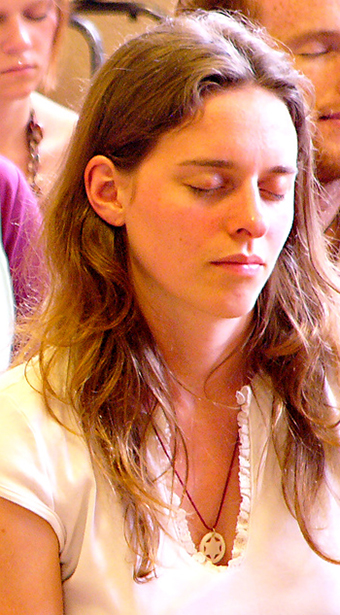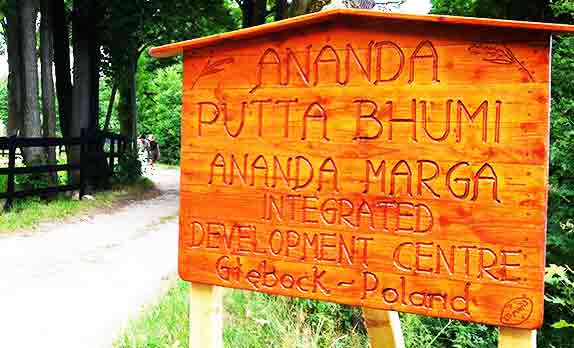Yoga & Meditation Event Held in Ireland's North Coast.
From August 27th to 30th, 2024, the rugged, but beautiful Antrim coastline in Ballycastle became the setting for the first ever Northern Ireland Yoga and Meditation Event. Against the stunning backdrop of Ireland's North Coast, this event was offered an environment for participants of all skill levels—whether seasoned yogis or complete beginners.
Attendees immersed themselves in a journey of music, art, dance and expression with gentle yoga. Meditative practices enhanced by the rhythmic sound of the ocean allowed the participants to go deep into the practice. The event also featured the uplifting energy of Kiirtan, RAWA and intuitive painting workshops fostering a sense of community and collaboration.
This inclusive gathering provided a welcoming space for all to explore the benefits of yoga, meditation, and well-being. The facility was hosting people from all walks of life, which gave people a chance to share with others outside of the retreat creating a unique and powerful flow. Participants left feeling rejuvenated, inspired, and more deeply connected. Future events are already in development. Jai!
For future Ananda Marga Ireland events and more information, please contact anandamargaireland@gmail.com or +353 89 483 7605.
The Faculty of Knowledge 1
The subject of today’s discourse is “The Faculty of Knowledge”.
In the mechanical sphere, knowing, or the functional side of knowledge, occurs with the perception of special types of reflections and refractions, but in the psychic sphere, it occurs as a result of the subjectivization of objectivity or objectivities.
For example, if a particular type of vibration hits an object or plate it meets some resistance and may get reflected or refracted, as in the case of an echo; or a certain portion of the vibration may pass through the plate. In the mechanical stratum, knowledge, or the faculty of knowledge, is thus attained. But in the psychic stratum, knowledge involves the subjectivization of any external objectivity or objectivities. We take an external object inside ourselves, be it an elephant, a horse, a vocalized word, a touch, or anything else with which we come in contact in the outer world, and assimilate it in our psychic existential “I” feeling. This is the process of knowing – it is something related to the psychic sphere. So, knowledge has two aspects – first, the aspect of reflections and refractions, and secondly, the psychic aspect; that is, the process of attaining knowledge in the psychic sphere.
The word jiṋána (knowledge) is derived from the Sanskrit root verb jiṋá (to know). In very ancient Sanskrit, which is otherwise known as the Vedic language, this root verb jiṋá was not very popular. Perhaps you know – especially those of you who study philology, or deal with the science of phonetics and vocabulary – that a language in its infancy starts with a very limited vocabulary. Later, the more the community using this limited word-stock advances in different spheres of practical life, the more enriched the vocabulary becomes, but if that community lacks the will to advance, their vocabulary will not grow. The ancient Vedic language, which was originally spoken in central Russia by the Aryans, gradually developed as the Aryans moved from country to country, undergoing innumerable experiences and realizations as they went. The natural outcome was the enormous development of their vocabulary. In that ancient dialect, the root verb jiṋá was not in common use; another verb, vid, was used.
CONTINUE READING...Invocation of the Supreme
Kośa means Ádhára or base.
Kośa means Ádhára or base. Are the Saptaloka (seven spheres) and paiṋcakośa (five sheaths) separate from the Átman (soul)? Is the relation between them that of the container and the contained? If we say; – Eko Brahma Dvitiiyanásti. (There is only one Brahma and no other), then of Ádhára and Ádhrta, which is Brahma and which is not? If either the container or the contained is considered as Brahma does that mean that the other is not Brahma? If it is argued that Saptaloka and Paiṋcakośa are the base of Brahma, then the existence of some other entity outside of Brahma has to be acknowledged. For instance, suppose there is a person in a house. The house and the person exist separately. The house is the container and the person is the contained. Hence, the house is separate from the person. In the Paiṋcakosá, Átman is the contained and the Kośa is the container. Clearly the container must be bigger than that which it contains. There is nothing bigger than Paramátman; hence it cannot have a container. Should we then consider that the Saptaloka and the Paiṋcakośa do not exist? Yes, for the Saptaloka is included in Brahma. Their aggregate is Brahma. The Jiiva is included in the Paiṋcakośa.
CONTINUE READING...






 In Selfless Service
In Selfless Service
